I’ve talked to many up-and-coming producers over the years that seem to have a lot of trouble creating the Hip Hop drums they desire. In this video, I discuss my top five tips for creating high-quality, hard-hitting drum samples.
Tip #1 – Hip Hop Drums (Sample Selection)
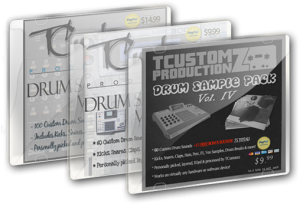 Your drum sample selection is key! If you don’t have a quality foundation of samples to work with from the start, it’s going to be very difficult to create high-quality, bangin’ drum tracks.
Your drum sample selection is key! If you don’t have a quality foundation of samples to work with from the start, it’s going to be very difficult to create high-quality, bangin’ drum tracks.
You may be using many types of drum sounds and getting your samples from a variety of places (i.e. 808 kits, sampling from vinyl, etc), but at the end of the day you just want to make sure that you have a good ear for what quality drum sounds are and make sure that you’re picking top-notch samples to begin with.
Tip #2 – Layering
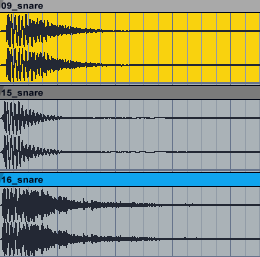 After you have a collection of nice drum samples to work with, the next step is to layer them. This means “stacking” two or more samples on top of each other and creating something brand new. For instance, you could layer a snare and a clap sample together. The snare may have a nice solid body, and layering that with a crunchy clap could make for a totally new and exciting sound.
After you have a collection of nice drum samples to work with, the next step is to layer them. This means “stacking” two or more samples on top of each other and creating something brand new. For instance, you could layer a snare and a clap sample together. The snare may have a nice solid body, and layering that with a crunchy clap could make for a totally new and exciting sound.
When it comes to layering, there are many subtle techniques you can use to fine tune your layered sounds. For example, you may consider varying the velocities (volumes) of each of the samples you are layering. This is explained in more detail in the video above.
Tip #3 – EQ (Equalization)
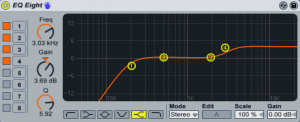 After you have your drum samples layered, you may want to consider EQing them, if needed. If you pick good samples from the start, this step may not be necessary. The idea with equalization is to increase or decrease certain frequencies of the samples in order to achieve a desired sound. A multiband EQ is great for this.
After you have your drum samples layered, you may want to consider EQing them, if needed. If you pick good samples from the start, this step may not be necessary. The idea with equalization is to increase or decrease certain frequencies of the samples in order to achieve a desired sound. A multiband EQ is great for this.
As I explain in the video, I tend to use an EQ in its simplest form – maybe as a high-pass filter to roll off some excess lowend of a super-bassy kick drum or as a high-shelf to heighten the higher frequencies of my snare or clap.
Tip #4 – Parallel Compression
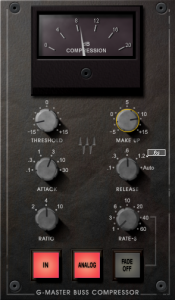 Also known as New York style compression, parallel compression is one of my favorite ways to get my snare to “punch” and my clap to “pop”. The concept is to route your drums to a separate track, where the second track is heavily compressed. Running the compressed and uncompressed drum samples in “parallel” can make for a more aggressive sound without becoming too overbearing.
Also known as New York style compression, parallel compression is one of my favorite ways to get my snare to “punch” and my clap to “pop”. The concept is to route your drums to a separate track, where the second track is heavily compressed. Running the compressed and uncompressed drum samples in “parallel” can make for a more aggressive sound without becoming too overbearing.
Once you experiment with this technique and learn how to apply it properly, you will notice a HUGE difference in the way your drums cut through the mix.
Tip #5 – Mastering / Final Compression
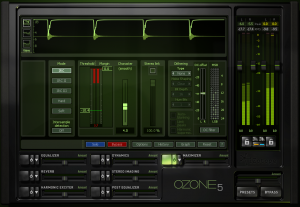 Don’t OVER-compress! When you go for your final mastering and compression, make sure you don’t “squash” down the audio too much. Hip Hop music is drum and bass driven, so keeping as much dynamics in the track as you can is highly desired.
Don’t OVER-compress! When you go for your final mastering and compression, make sure you don’t “squash” down the audio too much. Hip Hop music is drum and bass driven, so keeping as much dynamics in the track as you can is highly desired.
I describe this in more detail in the video above and you may also benefit from watching this short tutorial: How to Maintain “Hard-hitting” Drums when Compressing your Hip Hop track with Izotope Ozone
In Summary
These are pretty much all of the things I keep in mind when creating my Hip Hop drums. If you’re just starting to make beats, this may seem like a too much to digest all at once. I would recommend starting from the beginning and slowly learning each of the tips described in this post. You won’t regret it!
If you got any value from this video, please make sure to:

Comments (0)